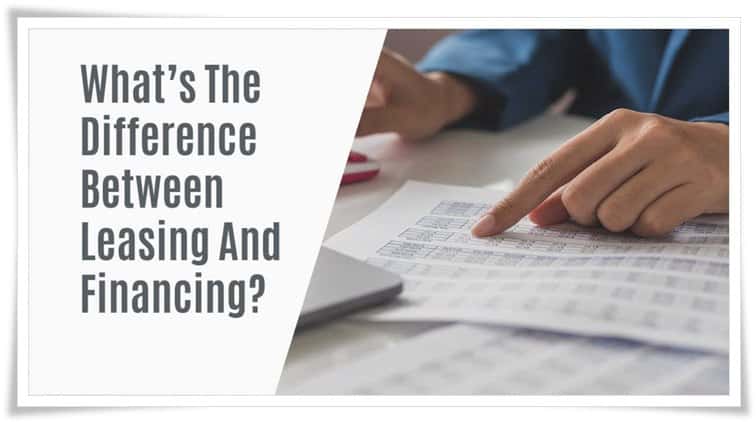There are many advantages to leasing a car, but it is important to understand the differences between leasing and financing before making your final decision. Leasing can be an excellent option for those who want to keep driving new cars every few years without paying high monthly payments of owning one outright. Financing a car has its advantages, like lower monthly payments and tax benefits. With so many options available, what’s the difference?
1. Difference Based on Ownership
One significant difference between leasing and financing is that you don’t own the car when your lease expires. If you choose to finance a vehicle, it will be yours to do as you please after making all required payments.
2. Difference Based on The Initial Down Payment
For auto loan refinancing, the down payment is a small percentage of the vehicle’s purchase price. Also, according to Lantern by SoFi, “Lower monthly payments are usually achieved as the result of a longer-term loan”.
On the other hand, lessees are required to pay an upfront deposit called a security or guaranty fee that can be equivalent to one month’s lease payments.
3. Difference Based on Monthly Payments and Total Costs
When financing a car loan for new or used models, you will most likely have a monthly payment of anywhere from $200 to over $500. Monthly leasing payments are generally much lower and can be under $100 per month.
When financing a new or used vehicle, the loan is paid off gradually until it is ultimately settled in about five years. With leasing terms on new cars, you will typically sign a two or four-year contract and make monthly payments for the entire duration.
A car lease costs an average of $350 per month, whereas buying with a five-year loan averages $491 per month. Therefore, leasing could save you hundreds of dollars a year if it is well within your budget, and buying outright will not exceed that amount for the same vehicle type.
4. Difference Based on Early Termination
When you lease a car, you must make all monthly payments before the contract is up. If you are unable to do so for any reason, there may be penalties involved in breaking your agreement early or even cancelling it altogether.
If your vehicle loan gets paid off early and the lender agrees that this will not negatively affect their business, you will not be penalized for early termination.
5. Difference Based on Vehicle Return
When you lease a car, it must be returned in excellent or better condition when the terms expire. In most cases, this means that there will not be any damage to the vehicle’s exterior and interior.
If your leased vehicle is stolen or totalled in an accident, you have no responsibility for damages. It is ultimately yours to do with as you please upon payment in full when you finance a vehicle. If the car gets worn down or totalled unexpectedly, you are responsible for paying off all damages caused by the accident.
Conclusively, leasing and financing a vehicle has its advantages and disadvantages. Financing is cheaper when you consider all costs associated with buying your car outright, but if you are looking for lower monthly payments, then leasing may be the better choice for you.
Disclaimer:
As a service to our readers, Ultimate tech news Publishing provides access to our library of archived content. Please note the date of last review or update on all articles. No content on this site, regardless of date, should ever be used as a substitute for direct advice from your adviser.

Leave a Reply
You must be logged in to post a comment.